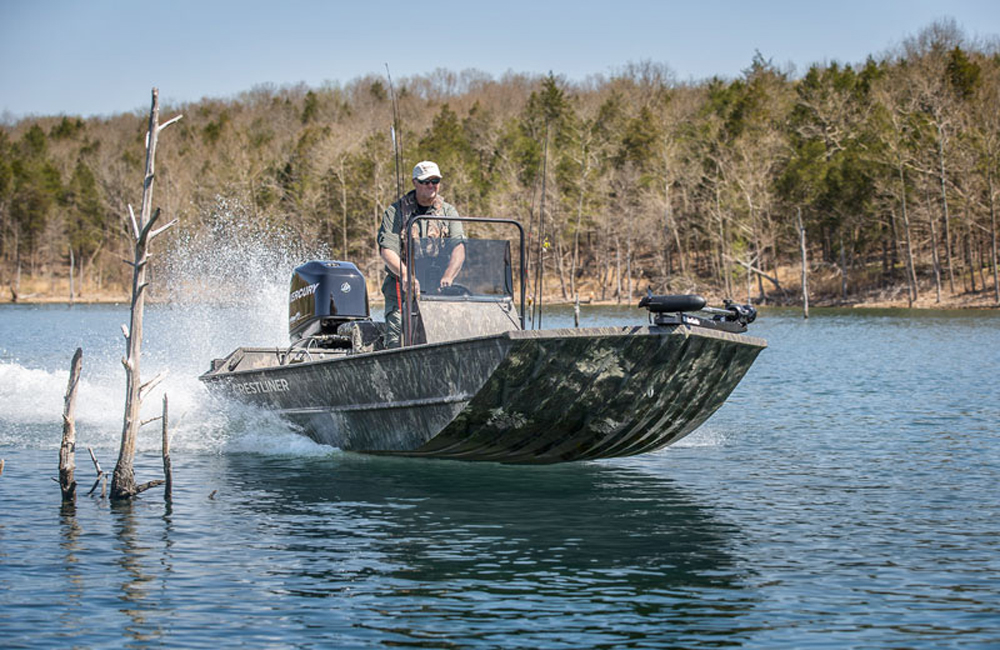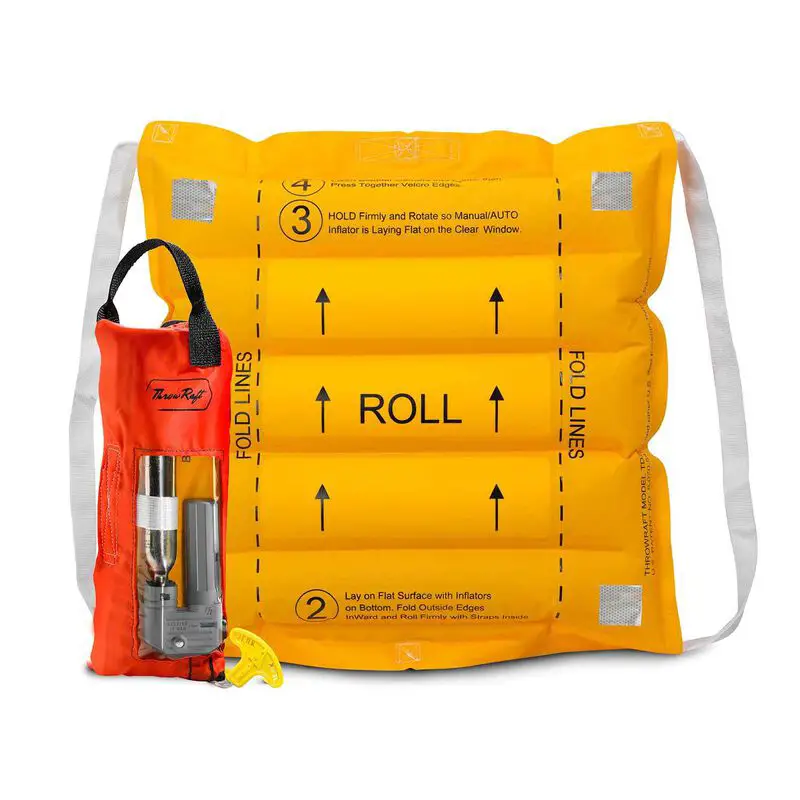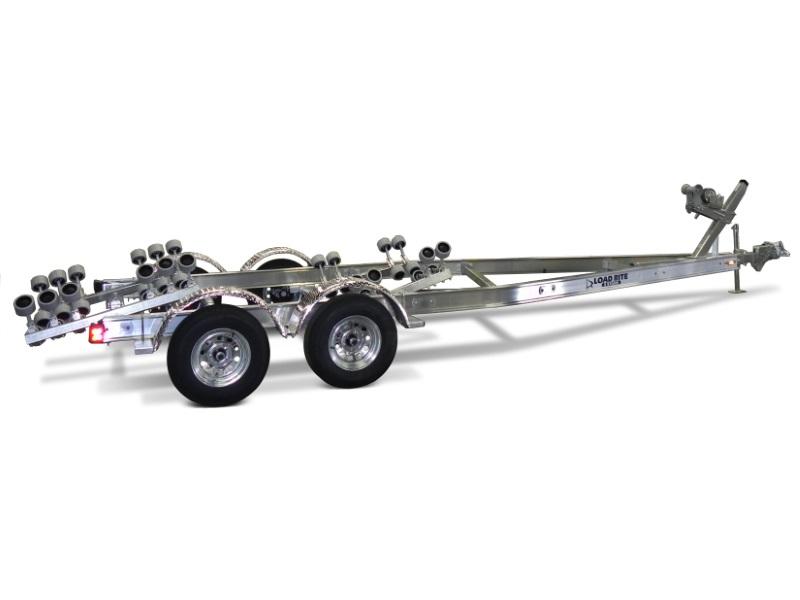Wake Foil: Mastering the Art of Hydrofoil Wakeboarding
Wake foiling has gained popularity in recent years, offering a whole new experience for water sports enthusiasts. Combining elements of wakeboarding, surfing, and hydrofoil technology, it allows riders to rise above the water's surface and hover effortlessly, even in choppy conditions. This innovative sport can be enjoyed behind any watercraft, including boats and jet skis, giving riders an unparalleled sense of freedom and a smoother ride compared to traditional wakeboarding.
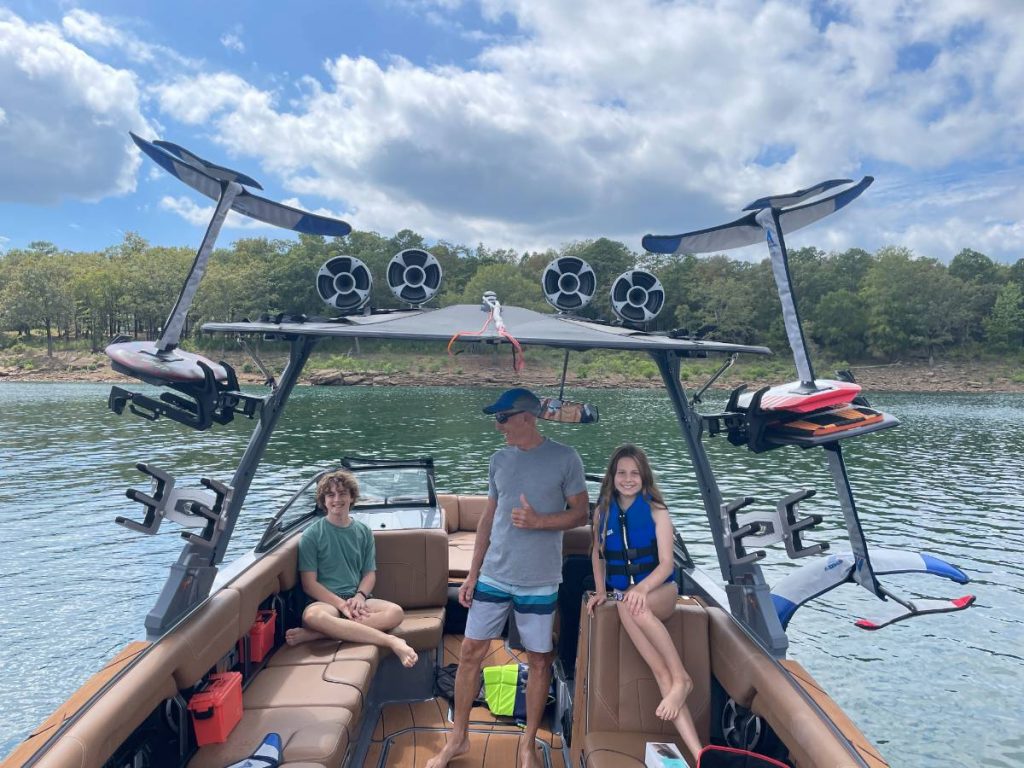
To get started in wake foiling, one must understand the key components of a wake foil system, which typically includes a board, mast, and foil. These components can be swapped out and customized to cater to different riding styles and water conditions. Additionally, many brands now offer a variety of foil board packages and models to suit beginners through to advanced riders. With the proper attention to safety, comfort, and technique, wake foiling can become an exciting and rewarding pastime for anyone interested in water sports.
Key Takeaways
- Wake foiling offers a unique riding experience, combining aspects of wakeboarding and hydrofoil technology
- Essential components of a wake foil system include the board, mast, and foil, which can be tailored to suit personal preferences and conditions
- A variety of brands and models are available, making it accessible for beginners and experienced riders alike.
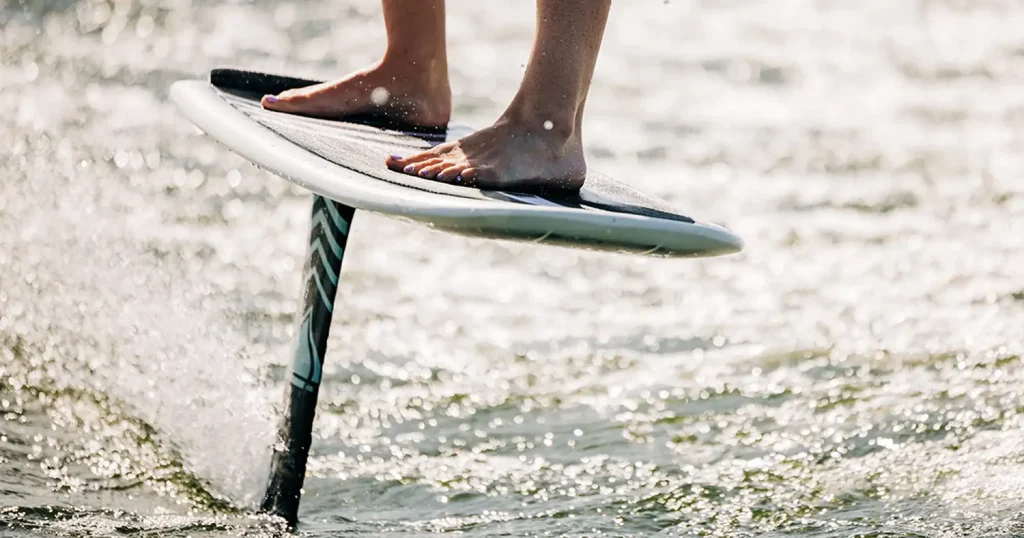
Understanding Wake Foil
Wake foiling is an exciting watersport that combines elements of surfing, wakeboarding, and foil surfing. It involves attaching a hydrofoil, known as a wake foil, to a specially designed board, allowing the rider to glide above the water's surface much like an airplane wing.
The sport has gained popularity in recent years due to its unique sensation of floating and the impressive maneuvers that can be performed on a wakefoil. Wake foils are mast-mounted foil wing systems similar to the air chair that were popular back in the day. When submerged in water, the foil creates lift at lower speeds, offering riders a smooth and enjoyable experience.
To get started with wake foiling, beginners should choose a wakefoil package that offers stability and ease of use. A high-performance wakefoil board, such as the Liquid Force Nebula, boasts exceptional durability and maneuverability due to its Dura Shell construction and Stringerless EPS foam composition.
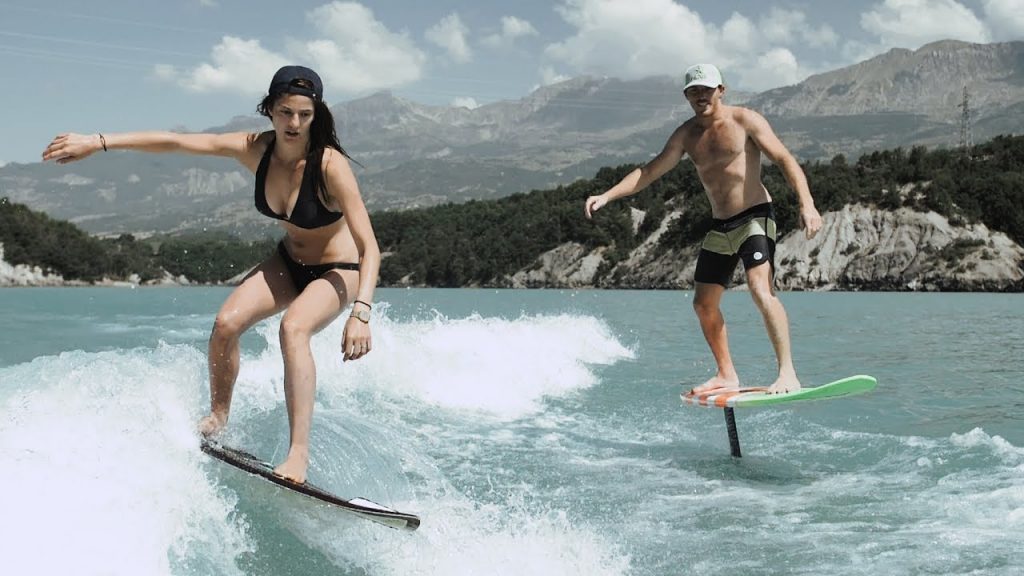
In addition to the right equipment, it's essential to understand the basic principles of wake foiling. One of the main components of a wakefoil is the front wing, which varies in size from 1200 to 1600 cm^2. The front wing is responsible for creating lift as water passes over it, while the back wing offers stability and fine-tuning.
Wake foiling can be enjoyed behind a boat and typically requires riding at wake surf speeds. This enables the rider to achieve efficient lift and remain afloat with less effort compared to other water sports. As riders progress in their skill level, they can explore advanced techniques and perform breathtaking aerial stunts.
Whether you're new to watersports or an experienced rider looking for your next adventure, wake foiling offers a fresh and exhilarating experience. By selecting the right equipment and investing time in mastering the basics, you'll soon be elevating your wakefoil game above the water's surface.
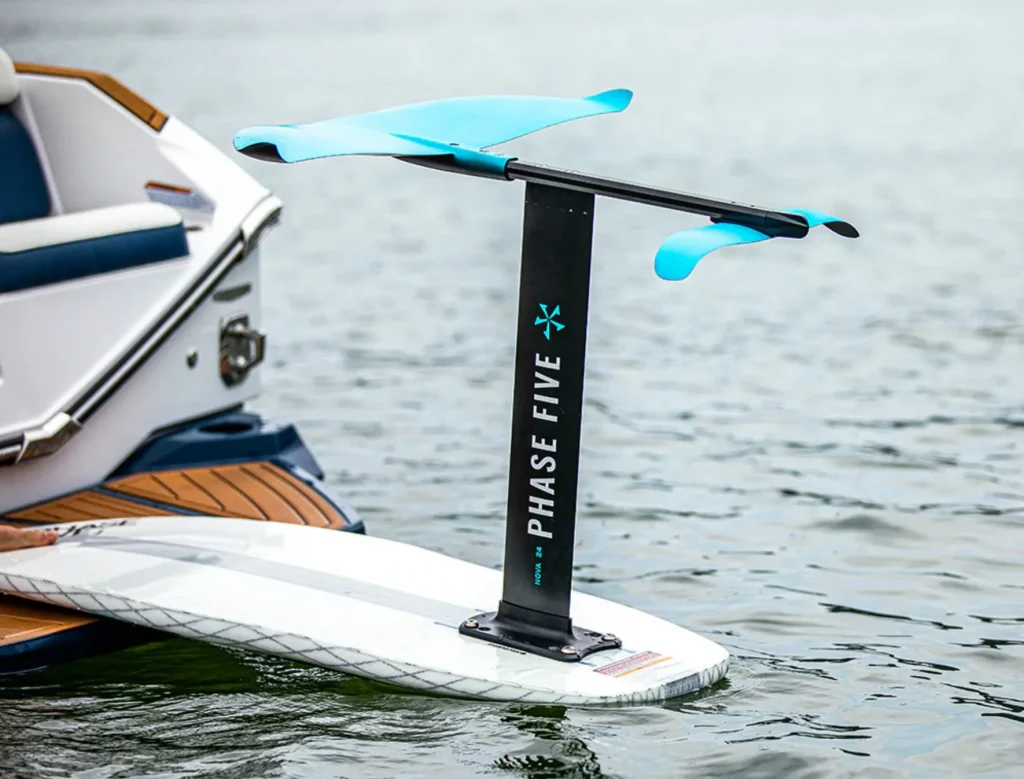
Key Components of a Wake Foil
A wake foil setup is an exciting and versatile water sport equipment that allows riders to experience a unique floating feeling on the water. This section covers the main components that make up a wake foil system, including the wing, mast, fuselage, and foot straps.
Wing
The wing serves as the central component of a wake foil, responsible for generating lift as the rider moves through the water. The size and shape of the wing directly affect the performance of the foil. The surface area of the wing influences the amount of lift and stability, while the aspect ratio determines the maneuverability and glide efficiency. For example, the Slingshot WF-1 and Slingshot WF-2 foil boards both have front wings with varying sizes and aspect ratios for different riding styles.
Mast
The mast, which attaches the wing system to the foil board, is a crucial element of a wake foil setup. Typically ranging in size between 24 to 32 inches, the mast's height significantly affects the user experience. For example, a shorter mast can be easier to control for beginners, while a longer mast provides more space for advanced riders to perform aerial tricks. The Ronix Koal Surface 727 is a popular option among beginners due to its user-friendly mast height.
Fuselage
The fuselage is the connecting component between the mast and the wing. This part plays a role in determining the stability and responsiveness of the wake foil setup. A longer fuselage results in increased stability, while a shorter one makes the foil more agile and maneuverable. Premium foil boards like the Liquid Force Nebula and Liquid Force Launch offer high-quality fuselages that provide the perfect balance between stability and responsiveness.
Foot Straps
Foot straps are essential for securely attaching the rider to the foil board. They come in various styles depending on the rider's preference and ability level. Adjustable straps are commonly found on Liquid Force Pod and Nebula Wake Foil Board models, catering to both novice and advanced riders looking for a customizable experience.
In summary, the key components of a wake foil setup, such as the wing, mast, fuselage, and foot straps, each play a crucial role in determining the overall performance, stability, and maneuverability of the wake foil system. Ultimately, riders should consider their skill level, preferred riding style, and desired features when selecting their perfect wake foil setup.

Getting Started With Wake Foiling
For Beginners
Learning to wake foil can be an exciting and rewarding experience. Beginners should start with a stable foil setup, such as Lift Foils' Best Wake Foil Setup for Beginners, which provides a balance of buoyancy, stability, and glide. When trying wake foiling for the first time, it's essential to have a proper rope setup, a competent crew, and at least a 30+ horsepower motor on your watercraft to ensure safety and enjoyment source.
As you practice, focus on improving your balance and gradually reducing the rope length. Becoming comfortable with getting up on the board and finding your center of gravity is crucial for progression. As a beginner, riding at slower speeds will help you develop your fundamental skills in wake foiling.
For Intermediate Riders
Once you've mastered the basics and demonstrated control over the wake foil, it's time to progress to more advanced maneuvers. Intermediate riders can try different foil sizes and setups to experiment with responsiveness and lift.
Start to incorporate basic tricks like carving turns, toe-side riding, and small jumps to build your foiling skillset. You may find the Balance 1300 or Link 3D fuselage helpful in enhancing your ride stability and control during maneuvering.
At this stage, riders should become proficient at wakesurfing, as it shares many similarities with wakeboarding and wake foiling, helping to solidify foundational skills and improving overall water sports ability source.
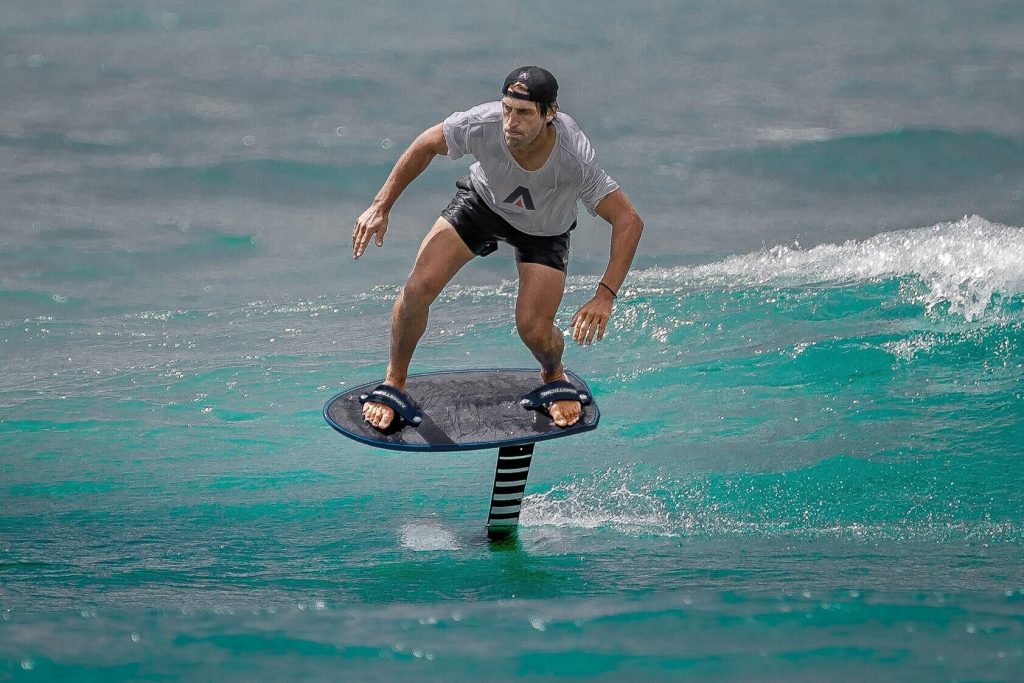
For Advanced Riders
Advanced wake foilers have already mastered the basics and intermediate skills, enabling them to push the limits of the sport. More advanced foil setups like slimmer wings with higher aspect ratios will allow for increased speed, agility, and precision.
Instead of relying on the boat's wake, advanced riders can start playing with the in-air transitions and aerial maneuvers that define high-level wake foiling. Experimenting with flips, spins, and lofty airs will set you apart as a competent foiler.
Joining a community of wake foilers or enrolling in advanced coaching sessions can help further your skills, situational awareness, and ability to ride various foil setups confidently.
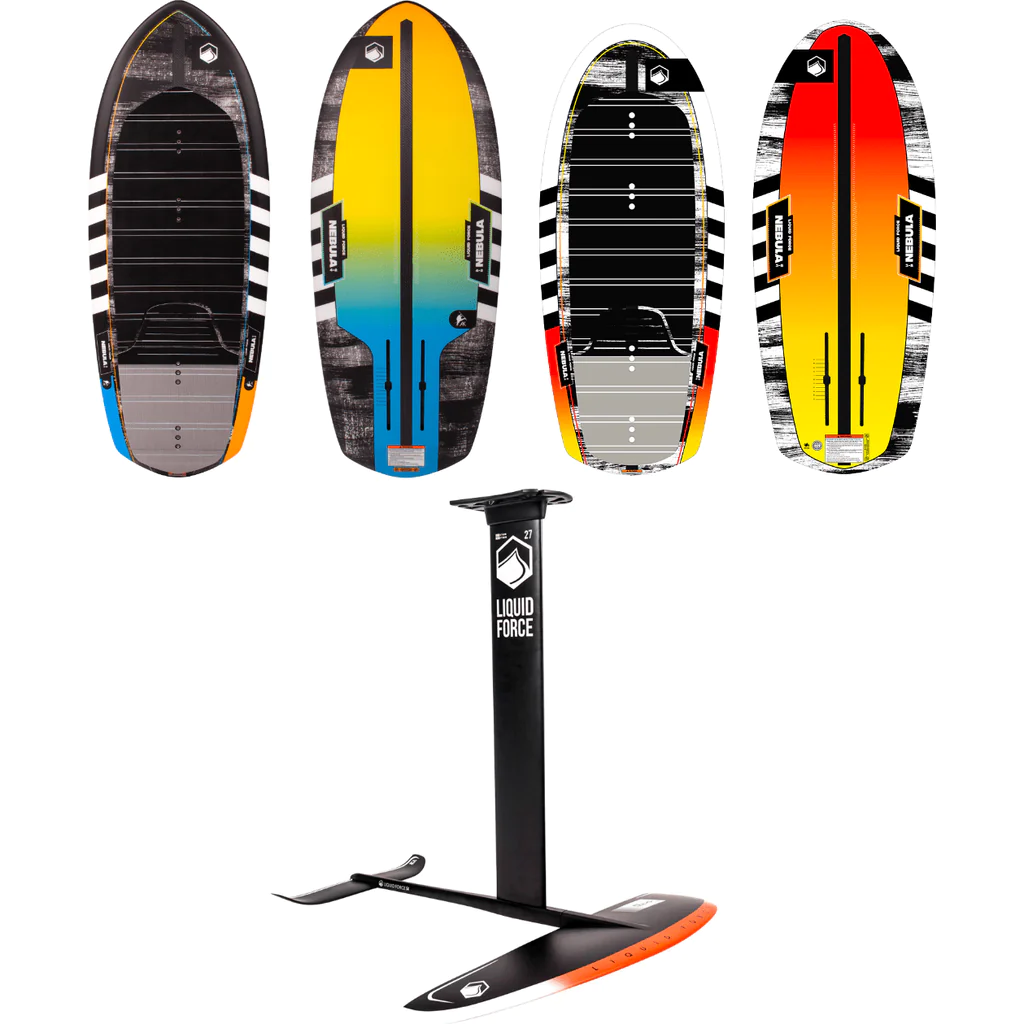
Wake Foil Brands and Models
Wake foiling is an exciting water sport that has gained popularity in recent years. There are several reputable brands that offer a range of wake foil boards and packages. In this section, we will cover three top brands: Liquid Force, Slingshot, and Ronix.
Liquid Force
Liquid Force is a well-known brand in the wake foiling industry, offering high-quality boards and foil packages. One popular model from Liquid Force is the Pod Wakefoil. This board features a lightweight design and includes a complete foil set, making it a fantastic choice for both beginners and experienced riders.
Additionally, Liquid Force offers a Carbon model, which is an advanced foil with a carbon fiber construction that reduces weight while maintaining strength. This design increases overall performance and responsiveness, making it ideal for advanced riders looking to push their skills to the next level.
Slingshot
Slingshot is another top wake foil brand and offers versatile solutions for riders at different skill levels. The Slingshot WF-T is a beginner-friendly wake foil that is designed for easy learning without compromising performance.
The Slingshot company also produces other wake foils with various features, allowing riders to customize their setup based on their individual preferences and skill levels. Slingshot is known for its innovative products, making it a top choice for wake foil enthusiasts.
Ronix
Ronix has made a name for itself in the wake foiling world by offering a range of high-quality products to cater to riders of all experience levels. Details of specific models may be found through further research or by visiting their official website. With a track record of producing reliable and innovative products, Ronix is a brand that wake foil riders can trust.
In conclusion, Liquid Force, Slingshot, and Ronix each provide a variety of wake foil brands and models to accommodate a range of rider skill levels and preferences. With each offering products that cater to different abilities and styles, riders are sure to find the perfect wake foil to meet their needs.
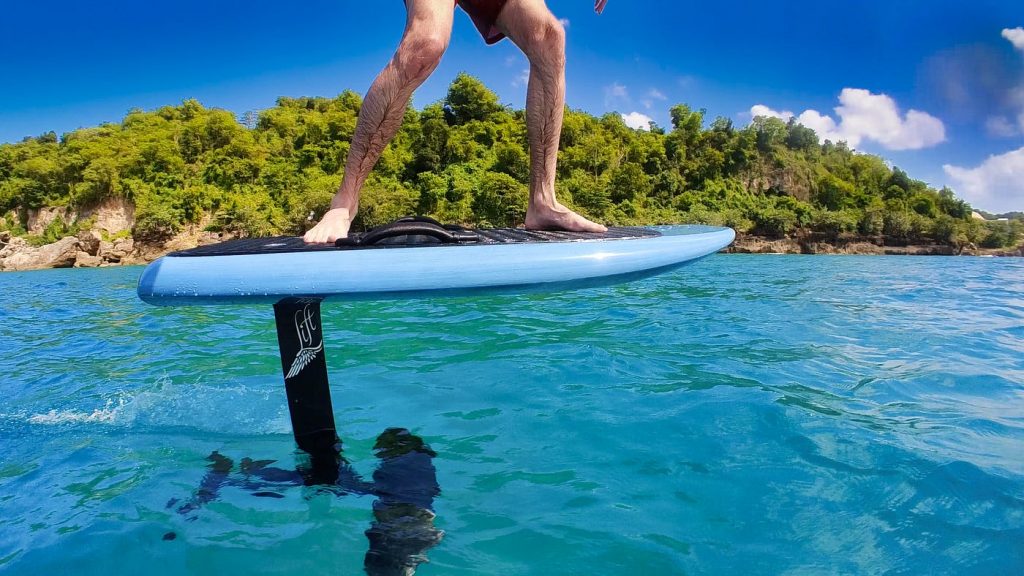
Using an Efoil
Efoils offer an exciting and unique way to experience watersports. As a relatively new technology in the world of foiling, efoils provide riders with an electric-powered hydrofoil board that can glide above the water effortlessly while providing smooth and silent rides.
Efoil Board
Efoil boards come in various sizes to cater to different rider preferences and skill levels. A larger efoil board offers more stability and is easier for beginners to learn on, while smaller boards provide more agility and responsiveness, allowing experienced riders to perform tricks and turns with ease. The electric motor within the efoil board powers the hydrofoil, propelling it through the water without the need for waves or tow. Riders control the speed and direction of the efoil using a handheld remote, making it easy to maneuver and navigate even for beginners.
Surf Foil
Surf foils also provide a unique way to enjoy watersports, allowing surfers to glide above the water using a hydrofoil attached to their surfboard. The Infinity and Gamma are popular types of surf foils, each offering their own distinct characteristics. The Infinity surf foil offers a more user-friendly experience with its large wing surface area, providing increased stability and lift for beginners or those who prefer a consistent, smooth ride. On the other hand, the Gamma surf foil features a smaller, more compact design, making it ideal for advanced riders who want to carve tight turns and perform aerial maneuvers.
Both efoils and surf foils offer thrilling experiences on the water by allowing riders to float above the surface and enjoy a smooth, quiet ride. Each type of foil caters to different skill levels and preferences, ensuring there's an option to suit every rider's needs.
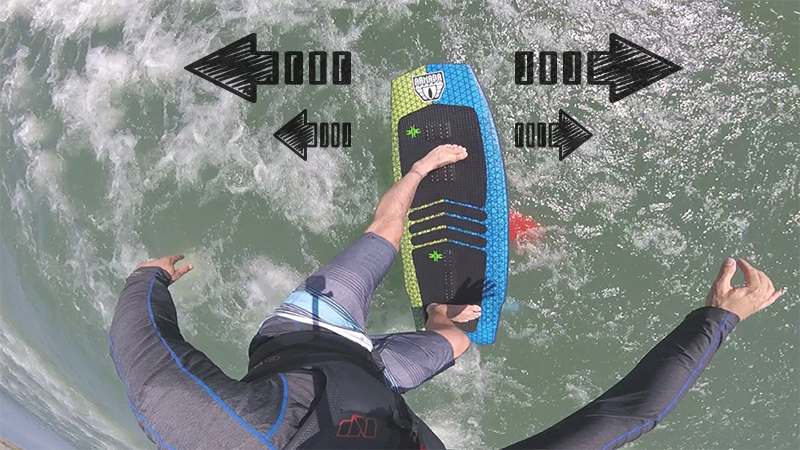
Evaluating Wake Foil Performance
When assessing the performance of a wake foil, there are several factors to consider, including the rider's skill level, the conditions under which the foil is used, and its overall design profile.
One of the key aspects of performance is the balance between stability and maneuverability. A well-designed wake foil should allow for beginners to learn and progress while also offering advanced riders the ability to perform tricks and reach higher speeds. Brands like Slingshot and Liquid Force offer models that meet both criteria, providing riders with a versatile experience.
Environmental conditions can also greatly affect the efficacy of a wake foil. The ideal wake foil is adaptable to various water conditions, including choppy and glassy waters. Well-established models, such as Slingshot's Hover Glide FSurf V4 Foil, provide pumpability and speed, making it suitable for different situations.
Profile of a wake foil plays a crucial role in determining a foil's efficiency. Wake and surf foils are designed to maintain lift at low speeds while having a medium top-end speed, which is essential when riding behind a boat. A heavier lower construction, as mentioned in the WakeMAKERS Buyer's Guide, contributes to a more stable and forgiving experience for riders.
Foil construction, including components like the mast, wings, and fuselage, influences the overall performance. For instance, Slingshot's Shift Fuselage allows for various mast placements that can tweak the foil's attributes and help achieve the desired performance.
In conclusion, evaluating wake foil performance requires a holistic approach, taking into account factors such as rider skill level, environmental conditions, and foil profile. Selecting the right model can greatly enhance the riding experience, offering the perfect balance of stability, speed, and adaptability.
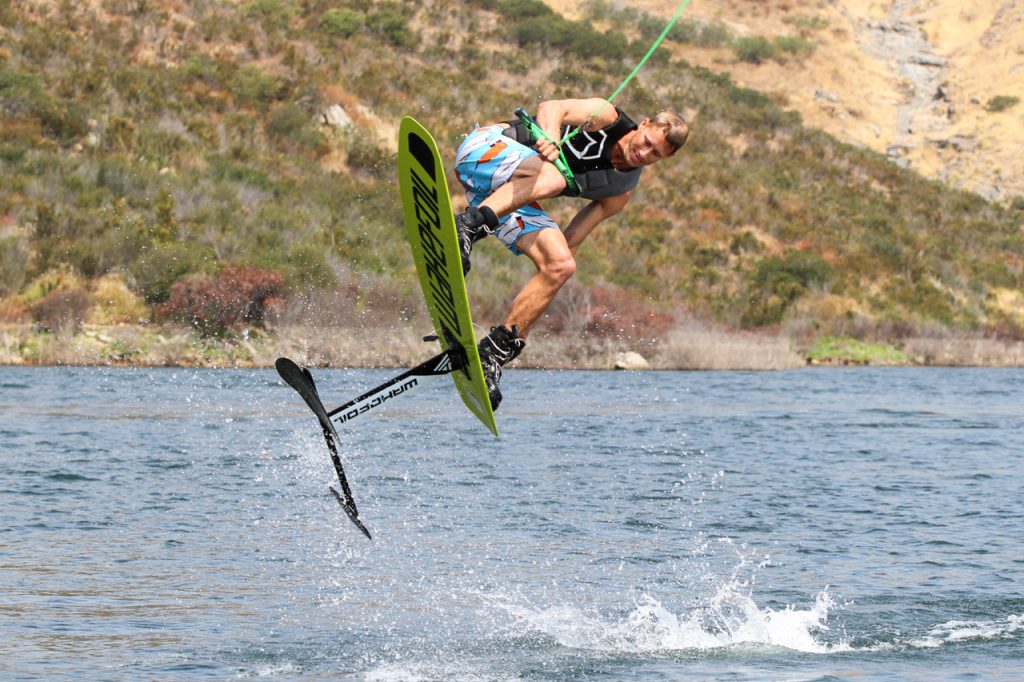
Safety and Comfort While Wake Foiling
Wake foiling is an exciting water sport, but it requires a certain degree of caution to ensure safety and comfort for the riders. Before attempting to wake foil, it is essential to possess basic water sport skills, such as swimming and balancing on a watercraft. Acquiring the appropriate protective gear like helmets and life vests helps improve safety and boost confidence among riders.
When it comes to equipment handling, riders should place the board on the back of the boat with wings pointed away from the boat and secure it properly before entering the water. Be cautious while moving around the foil to avoid injury; take care to avoid hitting anyone with the foil in or out of the water. As riders enter the water, they ought to jump far from the foil and swim towards the board using their hands only; this approach minimizes the risk of accidentally kicking the foil or injuring themselves1.
Maintaining the proper stance and balance while on the board are crucial factors in ensuring comfort and safety. Beginners should start by positioning their feet forward on the board so that the foil is directly below them2. This position provides stability while learning to balance. Keep your knees bent and your butt down for a lower center of gravity, which enhances control and stability.
As riders become more comfortable on the board, they can gradually shift their stance further back so that the foil acts like an airplane, lifting the board out of the water2. It is essential to practice wake foiling in calm water and steady wakes initially to develop the necessary skills for a controlled and enjoyable experience.
Properly maintaining and storing the wake foil equipment after use also contributes to overall safety. Ensure that all connections are secure before and after each ride, always inspect the equipment for signs of wear or damage3.
By following these guidelines and prioritizing safety, comfort, and confidence while wake foiling, riders can ensure a more enjoyable and safe experience on the water.
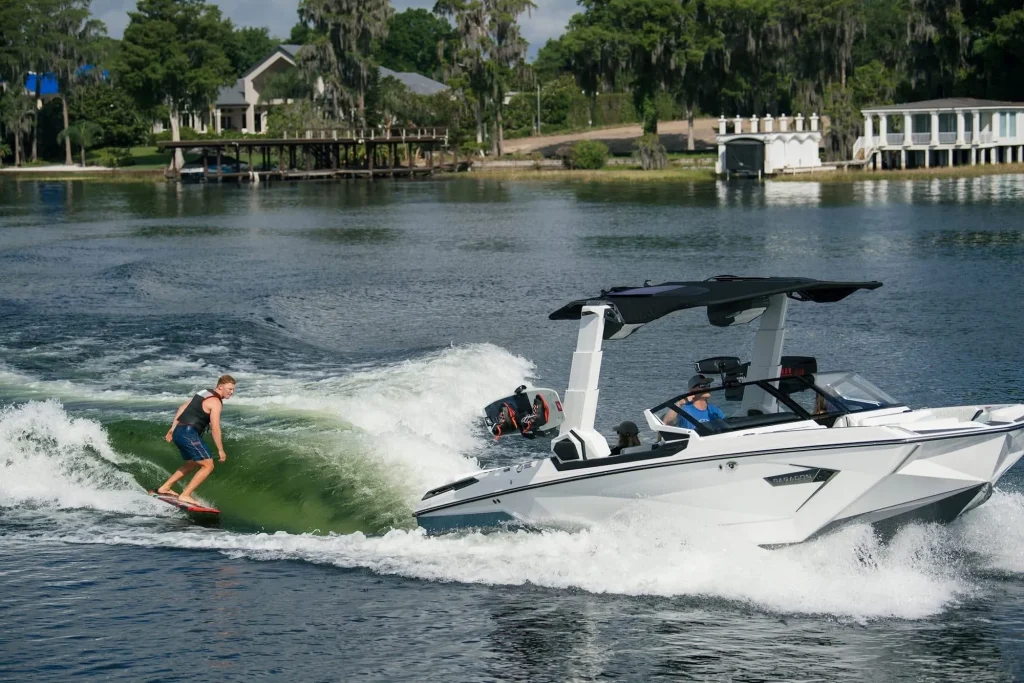
Wake Shaping and Wake Foiling
Wake shaping is a crucial aspect of wakeboarding and wake surfing, as it enhances the rider's experience by generating the optimal wake size and shape behind the boat. This can be achieved by using a wake shaper, which is a device that attaches to the boat's stern to redirect water flow, create a symmetrical wake, and improve overall performance.
Wake foiling, on the other hand, is a unique water sport that blends elements of surfing, kitesurfing, and hydrofoiling. It involves riding on a wake foil board, which features a hydrofoil beneath the board to provide lift, allowing the rider to glide above the water surface smoothly. This sensation of flying and floating is what sets wake foiling apart from traditional wakeboarding and wakesurfing.
To get the most out of wake foiling, it's essential to choose the right equipment. The wake foil board and hydrofoil setup play significant roles in determining the ride quality and ease of use. Some specialized wake foil boards, such as the Ronix Koal Surface 727, are designed explicitly for foiling, offering a dedicated platform that's optimized for flight.
When starting with wake foiling, it's also essential to learn the correct techniques and safety precautions. Beginners should initially practice with a tow rope to maintain stability and control while adjusting to the foil's lift. As they gain experience, riders can gradually shift to riding without a rope, using only the boat's generated wake to propel themselves across the water.
One benefit of wake foiling is its versatility: it can be towed by various watercraft, including jet skis, eliminating the need for a high-end wakeboarding boat. Furthermore, wake foiling offers a smoother and more enjoyable ride, as it drastically reduces chop and vibrations typically encountered in other water sports.
In conclusion, proper wake shaping paired with an appropriate wake foil board can create an exhilarating and enjoyable experience for both beginners and experienced riders alike. With attention to technique and safety, wake foiling offers a unique and exhilarating way to enjoy time on the water.
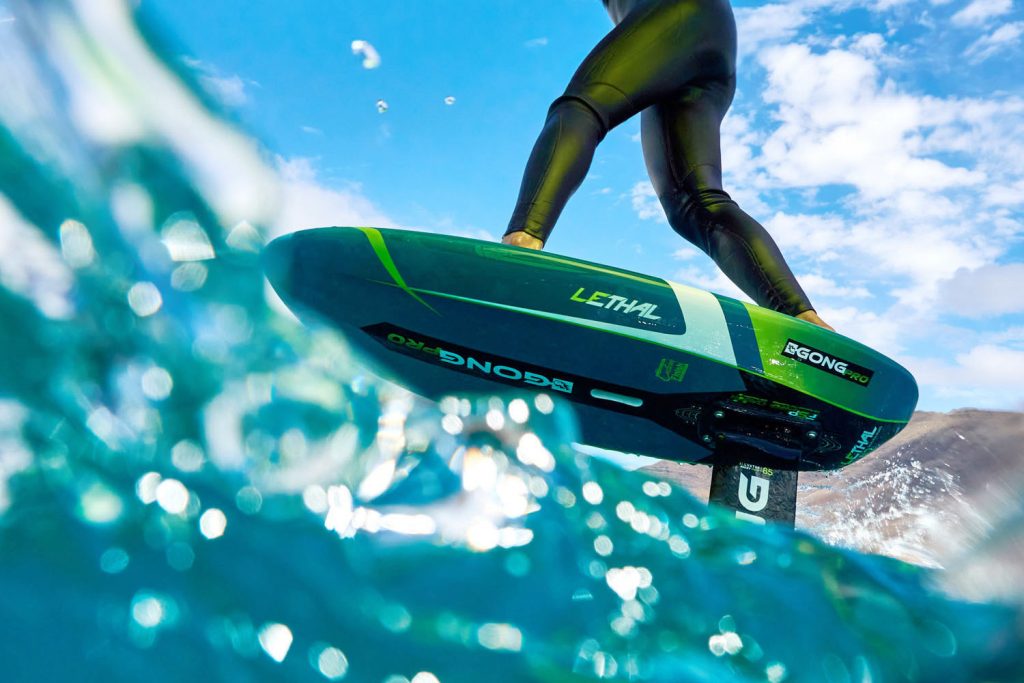
What to Expect in Terms of Price
Wake foiling has grown in popularity over the years, and many board packages are now available on the market. Prices can vary depending on factors such as the brand, materials used, and design technologies implemented. Generally, wake foil board packages will range within a ballpark amount of $800 to $2000 and above.
Beginners may lean toward purchasing a more affordable option, such as the popular Liquid Force Carbon mentioned as the best wake foil board overall. However, investment in high-quality products will typically yield better performance and, in turn, a more enjoyable wake foiling experience.
Some factors that can influence the price of a wake foil board package include:
- Construction materials: Carbon fiber is lighter and offers superior performance, but it often costs more than aluminum-based foil boards.
- Mast length: Longer masts can make it easier to learn and provide a smoother ride, but they may also be more expensive.
- Board shape: Different board shapes are designed for various skill levels and riding styles. More specialized wake foils can come with an increased price tag.
When considering the cost of a wake foil board, it is essential to remember that investing in quality equipment could make a difference in one's ride. Buyers should factor in their personal preferences, skill levels, and intended use before making a decision.

Frequently Asked Questions
What is the best wake foil for beginners?
The best wake foil for beginners should be stable and easy to learn on. A good starting option is a wake foil with a relatively heavy construction, which provides stability for the rider. One highly recommended package for beginners is the Liquid Force Carbon Horizon + Nebula, which has been praised for its performance and ease of use.
Where can I find wake foil reviews?
You can find wake foil reviews on various websites specializing in water sports equipment. Online forums and social media groups dedicated to wake foiling are also excellent places to find reviews and personal experiences from fellow wake foilers. Websites like WakeMAKERS and Barts offer useful reviews and buyers guide for a wake foil.
What are the differences between wake and surf foils?
A key difference between wake foils and surf foils is the speed they are able to handle. Surf-style foils are designed for slower riding, typically optimal at speeds of 4-6 MPH, whereas wake-style foils can handle slightly higher speeds, usually between 8-10 MPH or even more. The construction and materials used in surf foils might also differ from those in wake foils, with increased emphasis on stability and slower turns for surf foils.
Are motorized wake foil boards available?
Yes, motorized wake foil boards, also known as e-foils, are available. They combine the thrill of wake foiling with the convenience and independence of a motorized board, allowing riders to foil without being towed by a boat. E-foils are usually equipped with a battery-powered electric motor, which provides propulsion and, in some models, can be controlled remotely.
What is the ideal speed for wake foiling behind a boat?
The ideal speed for wake foiling behind a boat will depend on the rider's skill level and the type of foil being used. Generally, wake foils can handle speeds between 8-10 MPH or more, while surf-style foils are typically optimal at speeds of 4-6 MPH. It's essential to start slow and gradually increase the speed as the rider becomes more comfortable and skilled.
Where can I find used wake foils for sale?
You can find used wake foils for sale through various online marketplaces, such as eBay, Craigslist, or Facebook Marketplace. Additionally, some water sports equipment retailers and wake foil shops may sell refurbished or second-hand wake foils. Local wakeboarding or water sports community groups are also good sources to find used wake foils for sale.
Footnotes
- Wake Foiling | How to Handle Your Foil In and Out of the Water ↩
- A Comprehensive Guide to Wake Foiling - Lift Foils ↩ ↩2
- Wakefoil and Surf Foil Buyer's Guide - WakeMAKERS ↩
Charlie is Editor-in-Chief of Sea Magazine


